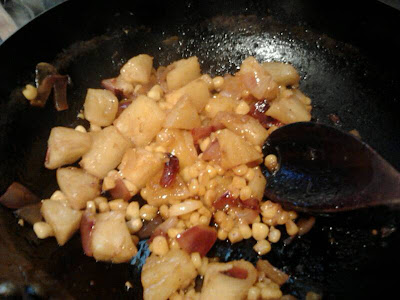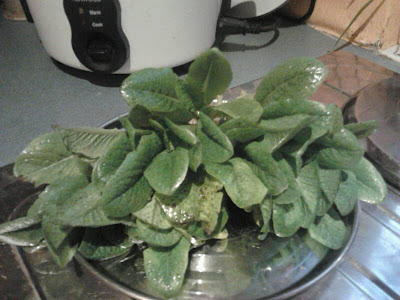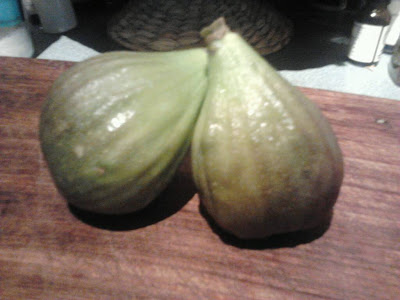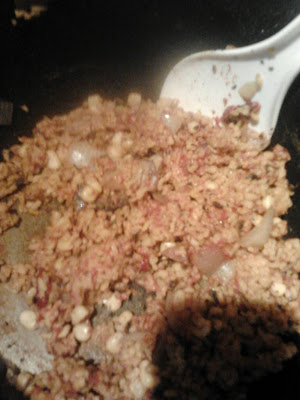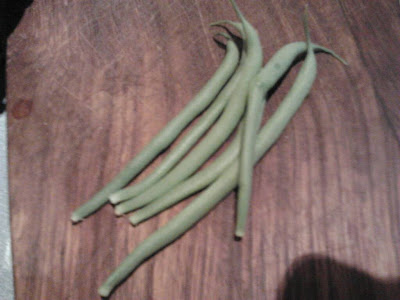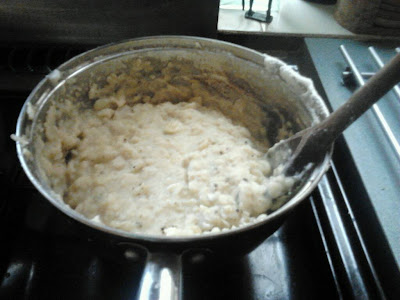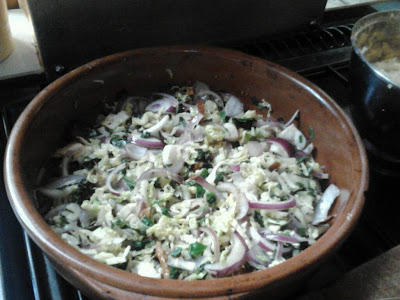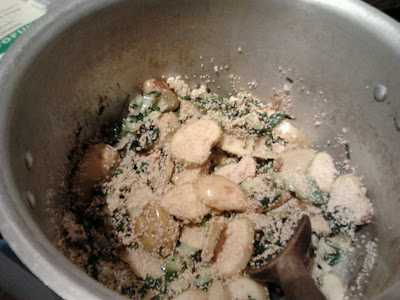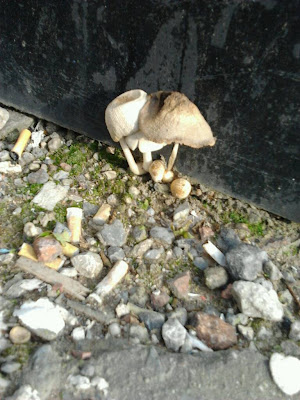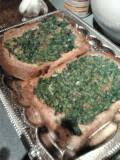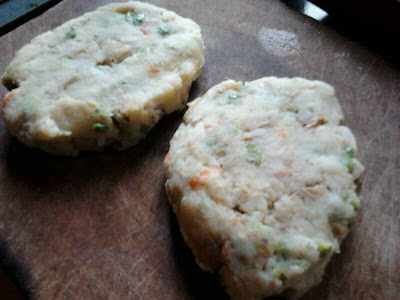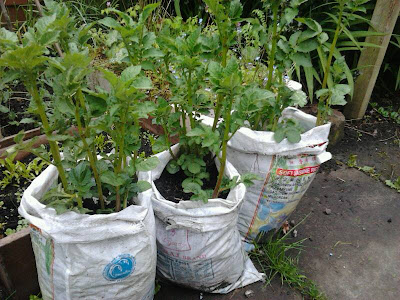

Are you a spud bud? Who doesn't like a potato?
Over the years I've dipped in and out of freeganism and the humble spud is a joy to find amongst the supermarket food bins, not because they make good honest scavenged food but with a little encouragement, a dark cupboard and some patience you can have your own little production line for new potatoes. You can equally do this with the yellow labelled (reduced item lines) spuds and bag yourself cheap seed potatoes, or even with your peelings (why you would want to peel a spud please let me know!) I once found a spud at the side of the road when walking home, why waste an opportunity like this, and often at the end of the day at your local market you can find a few floating around.
Anyway I know it isn't cooking but consider this as a pathway to potato joy. Just take your potatoes and place them on newspaper and put them in a dark cupboard for a few weeks. If they are fregan spuds you will need to trim off any bad or damaged areas before doing this, the smell of rotten potatoes is not something you want to cultivate.
They should start to throw off sprouts by the third week and you will then be able to plant them.
The great thing is that you don't need much room for growing them, after living 7 years in the city I found that old rice sacks or bin bags make great planters for your mini spud farm as they can slip onto a balcony or in a corner of a yard. Whats also great about spuds is they can cope well with poor soil so if you are in the city and soil is hard to come by, you can use broken up brown cardboard mixed with earth to bulk out the growing medium . Just make sure any soil or other medium is free from pollutants.
Now just quarter fill your rice sack, place in 5 chitted potatoes (the technical term for sprouted spuds) and top up with the rest of your growing medium.
In a few further weeks they should be popping their green leafy heads over the edge of the sack. You can let them do their own thing, only water if they look droopy or they are in a position where they can't access rain. Potatoes will reliably inform you when they are ready for harvesting as they start turning yellow and dying back.
Now several months later its time to spread spud joy and share your efforts with a tasty dish. Here's one I prepared earlier:-
Tortilla Veganese
I was inspired in this by two places I visited in recent years thats left me with food in my belly, change in my pocket and potato joy in my soul. Firstly, Vegetalia in Barcelona , a great place to hang out in the gothic quarter and soak up the history of the Catalonian spirit of political resistance and culture. Secondly, Mono in Glasgow, Jane and I revived ourselves with their vegan ingenuity after spending the week living off porridge in Ayrshire.
1. Slice your spuds into 5mm thick slices and boil until they are soft enough to poke a knife easily through without breaking. Be careful not to over cook as you want to keep them firm.
2.Set your spuds aside to cool.
3. Now you need to make a gram flour (chickpea/besan flour) sauce. Gram flour is an excellant source of protein.
Warm some oil (vegan marg will equally do) and add about 2 tablespoons of gram flour, a pinch of chilli, some smoked paprika and a finely chopped bell pepper and small onion. Fry off until sticky, then slowely add water a bit at a time, stirring constantly. Add seasoning as you desire.
The skill here is to add your liquid without getting lumps until you have a thick creamy sauce. You can experiment with adding different things to your sauce, try cilantro (coriander) or spinach and nutmeg.
4.Set your sauce aside to cool for a moment.
5.Add your cooked spuds to the sauce, you have to be liberal with quantities. Your sauce should be like thick custard and you want to add enough spuds so they are all thickly coated. Shake don't,stir (thanks James!), as you want the spuds to keep their shape.
6. Pour spuds,sauce and all into an oil lined baking tray and bake until firm and browned on top. My oven tends to default at gas mark 6 so I would say middle of the oven for around 20 mins gas mark 5 to 6.
7. Once cooked, allow to cool for few hours to set the dish, and then it can be conveniently sliced and served either cold or re-heated.
Published with Blogger-droid v1.6.9


